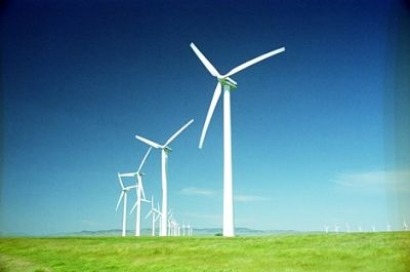
Nearly half of this year's capacity additions are likely to be in China, according to BI’s Global Wind Energy Midyear Outlook, with the country's largest turbine manufacturer, Goldwind, set to boost top-line growth 16 percent, based on consensus. Growth expectations are more tepid for European manufacturers Vestas, Siemens Energy and Nordex, yet BI sees potential upside to analysts' 2024-26 numbers.
“Global wind additions could rebound to about 110 gigawatts in 2023 after dipping to 86 GW last year, and we believe there's scope for that figure to soar to nearly 150-190 GW by 2027, propelled by the Inflation Reduction Act, REPowerEU and other favourable policies” said Rob Barnett, BI Senior Clean Energy Analyst. “Such a scenario would likely drive a significant surge in Vestas, Nordex and peers' orders.”
According to BI, European wind-turbine makers' consensus sales growth is in the doldrums compared with the International Energy Agency's net-zero outlook, though BI sees the potential for much faster advancement. The top lines of Vestas, Siemens Energy's renewable-energy unit and Nordex could increase by an average of about 10 percent a year in 2023-26. These companies expanded revenue at a compound annual rate of around 16 percent in 2015-21, and BI believes similar gains can be achieved in 2025-30, assuming net-zero goals boost demand.
Global wind installations expanded at a compound annual rate of about 15 percent in 2005-21, and though that pace may stall in 2021-23 amid supply-chain and permitting bottlenecks, BI believes that favourable economics and policy support could buoy 2024-25 growth. The IEA's accelerated scenario calls for annual installations to climb to about 190 gigawatts by 2027.
Turbine manufacturer Vestas' sales expanded at a compound annual rate of more than 15 percent in 2018-21, and though guidance calls for deliveries to fall in 2023 amid persistent supply-chain bottlenecks, revenue could still climb thanks to higher turbine prices. Deliveries may also return to growth in 2024 on a solid order book. Consensus calls for the top line at the median company in BI’s peer group to increase by 7 percent in 2023, compared with a 7 percent decline in 2022.
Most segments in the wind-supply chain, including turbine production, could benefit from passing elevated costs on to consumers. In BI’s view, equipment manufacturers and project developers (excluding turbine OEMs) may report sales gains of about 10 percent in 2023. That figure is likely to rise in line with strong, policy-driven demand.
“Profit margins at Vestas, Nordex and peers could improve this year on sustained easing of steel costs, which have fallen more than 50 percent since running up to a peak in 2022” added Rob Barnett, BI Senior Clean Energy Analyst. “Though European steel prices are about 40% above their pre-pandemic level, they've declined significantly since Russia invaded Ukraine, which is likely to set the stage for a profit recovery at Europe's main turbine manufacturers Vestas and Nordex. Rival Siemens Energy has been hamstrung by operational issues and warranty provisions, but lower steel prices could also help to lift margin once those issues are resolved.”
For additional information:

